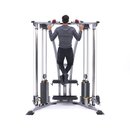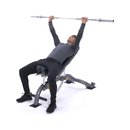Kelechi Opara is always lean, but when he needs to get absolutely shredded for a contest or photo shoot he fine tunes his diet and training program with a science-based approach.
Through extensive research and years of practice, Kelechi has formulated a non-linear and calorie partitioning diet that he follows specifically. His outlook on conditioning his body is to stimulate the muscle for growth rather than annihilating it to complete failure.
To get full access to Kelechi's effective tips on leaning out, check out his personal cutting regimen.
 Apple
Apple
 Eggs
Eggs
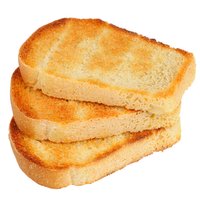 Toast
(whole-wheat)
Toast
(whole-wheat)
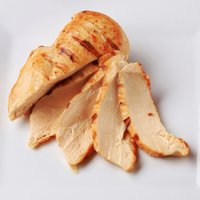 Chicken
(skinless)
Chicken
(skinless)
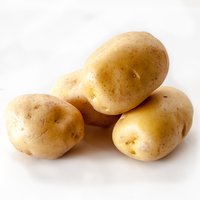 Potato
Potato
 Chicken
(skinless)
Chicken
(skinless)
 Protein Powder
(ON Whey Protein)
Protein Powder
(ON Whey Protein)
 BCAAs
(ON Amino Energy)
BCAAs
(ON Amino Energy)
 Potato
Potato
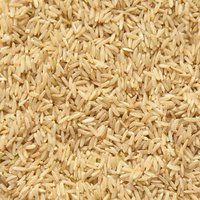 Brown Rice
Brown Rice
 Chicken
(skinless)
Chicken
(skinless)
Maintenance Multiplier
To find out how many calories you need to gain muscle mass or lose fat mass, you must first calculate your maintenance calories. Your maintenance calorie level is how many calories you need to consume during the day to stay the same weight.
This is calculated by taking your current weight and multiplying it by 15. (Ex. 150lbsX15 = 2250 Calories).
From this you want to add or subtract approximately 500 extra calories per day depending on what your overall goal is. If you are trying to build muscle then add, but if you are trying to lean out then subtract.
Everyone is different, so the following multipliers are a good general rule of thumb:
Average Metabolism, X 15
Male Fast Metabolism, X 16
Female Fast Metabolism, X 14
Thermic Effect of Food
Thermic Effect of Food (TEF) is the energy expended by our bodies in order to process the food we eat. Not all calories are created equal, and different types of foods take different amounts of energy to digest. Generally speaking the more nutrient dense (healthier) the food, the more calories will be burned just from eating it.
The following is a breakdown of the TEF matrix of the macronutrients:
- Protein: On the scale of energy required to digest different foods, this one sits at the top. Digesting proteins is difficult for your body and tends to burn more calories than any other type of food. Some estimates go as high as 30% of protein calories you consume get burned during digestion.
- Carbohydrates: Carbs can be broken down into two separate subgroups; simple and complex. Simple carbs like sugar and refined carbs are easily digested and turned into fleeting energy by your body, and therefore burn little calories during digestion. These types of foods are so easy for our bodies to digest that it only burns an estimated 3% of the calories you consume during digestion. Complex carbs however take much more energy for your body to digest, which is why it is important to eat complex carbs like whole wheat or brown rice.
- Fat: Fat is very easily digested by your body and therefore, as far as TEF goes, should be eaten sparingly.
Training

BodyFit
$6.99/month- 2,500+ expert-created single workouts
- 3,500+ how-to exercise videos
- Detailed workout instruction
- Step-by-step workout tips
- Training at gym or at home
- Access to Workout Plans
- Access to Bodyfit App
- Store Discounts
Already have a Bodybuilding.com account with BodyFit? Sign In

What comes with BodyFit?

- Instructional Videos
Don't risk doing a workout improperly! Avoid injury and keep your form in check with in-depth instructional videos.

- How-to Images
View our enormous library of workout photos and see exactly how each exercise should be done before you give it a shot.

- Step-by-Step Instructions
Quickly read through our step-by-step directions to ensure you're doing each workout correctly the first time, every time.

BodyFit
$6.99/month- 2,500+ expert-created single workouts
- 3,500+ how-to exercise videos
- Detailed workout instruction
- Step-by-step workout tips
- Training at gym or at home
- Access to Workout Plans
- Access to Bodyfit App
- Store Discounts
Already have a Bodybuilding.com account with BodyFit? Sign In

What comes with BodyFit?

- Instructional Videos
Don't risk doing a workout improperly! Avoid injury and keep your form in check with in-depth instructional videos.

- How-to Images
View our enormous library of workout photos and see exactly how each exercise should be done before you give it a shot.

- Step-by-Step Instructions
Quickly read through our step-by-step directions to ensure you're doing each workout correctly the first time, every time.

BodyFit
$6.99/month- 2,500+ expert-created single workouts
- 3,500+ how-to exercise videos
- Detailed workout instruction
- Step-by-step workout tips
- Training at gym or at home
- Access to Workout Plans
- Access to Bodyfit App
- Store Discounts
Already have a Bodybuilding.com account with BodyFit? Sign In

What comes with BodyFit?

- Instructional Videos
Don't risk doing a workout improperly! Avoid injury and keep your form in check with in-depth instructional videos.

- How-to Images
View our enormous library of workout photos and see exactly how each exercise should be done before you give it a shot.

- Step-by-Step Instructions
Quickly read through our step-by-step directions to ensure you're doing each workout correctly the first time, every time.

BodyFit
$6.99/month- 2,500+ expert-created single workouts
- 3,500+ how-to exercise videos
- Detailed workout instruction
- Step-by-step workout tips
- Training at gym or at home
- Access to Workout Plans
- Access to Bodyfit App
- Store Discounts
Already have a Bodybuilding.com account with BodyFit? Sign In

What comes with BodyFit?

- Instructional Videos
Don't risk doing a workout improperly! Avoid injury and keep your form in check with in-depth instructional videos.

- How-to Images
View our enormous library of workout photos and see exactly how each exercise should be done before you give it a shot.

- Step-by-Step Instructions
Quickly read through our step-by-step directions to ensure you're doing each workout correctly the first time, every time.

BodyFit
$6.99/month- 2,500+ expert-created single workouts
- 3,500+ how-to exercise videos
- Detailed workout instruction
- Step-by-step workout tips
- Training at gym or at home
- Access to Workout Plans
- Access to Bodyfit App
- Store Discounts
Already have a Bodybuilding.com account with BodyFit? Sign In

What comes with BodyFit?

- Instructional Videos
Don't risk doing a workout improperly! Avoid injury and keep your form in check with in-depth instructional videos.

- How-to Images
View our enormous library of workout photos and see exactly how each exercise should be done before you give it a shot.

- Step-by-Step Instructions
Quickly read through our step-by-step directions to ensure you're doing each workout correctly the first time, every time.
Supplementation
pre-workout
{{caption}}
ON whey protein 2 scoops

{{caption}}
ON Beta-Alanine Energy 1 serving

{{caption}}
ON Beta-Alanine 2 scoops
during workout
{{caption}}
ON whey protein 2 scoops
daily
{{caption}}
ON fish oil 5 per day
cycled
{{caption}}
ON creatine 5 per day
Kelechi Opara's Personal Philosophy
Nutrition
The cornerstones that guide my personal philosophy on daily nutrition are:
- Total calories
- Time of day I'm training
- Day of the week
- Contest prep or photo shoot
Total Calories
When it comes to nutrition the most important aspect to me (should be for anybody) is total calories. Total calories is going to determine whether you lose body fat (or muscle for that matter when cutting is done incorrectly) or whether you gain muscle mass.
To expound further, if you want to gain muscle mass first ensure the total calories consumed exceeds calories spent. If you want to lose weight (body fat) make sure the calories burned exceed the calories being consumed.
Eating every 3 hours IS NOT going to speed up your metabolism, nor does missing a meal or two cause you to lose your hard-earned muscle. The process where your body starts using muscle protein for energy takes approximately 18 hours or so (faster if you're active) before it begins.
As a matter of fact there's evidence that eating too frequently (i.e. every 2 hours) may slow your muscle growth.
Time Of Day
The main reason I eat every 3-to-4 hours (sometimes five hours pass by) is a matter of convenience and not to rev up my metabolic rate. The convenience aspect of it involves breaking up the total calorie amount for the day into manageable portions.
I also structure my meals around the time of day that I train, because I want to make sure the tank is full when I train to have as much intensity as possible in the gym. I usually like eating two hours or at the most three hours before I go to the gym and it usually consists of .25 gram of protein per pound of body weight and the same amount for carbohydrates.
It's important to note that the typical mixed meal takes a few hours to digest so even when you eat three hours earlier there's really no need to eat again immediately before going to the gym. The only time I would eat immediately before going to the gym would be if my last meal was 4-to-5 hours ago.
In that case, I would usually have a whey protein shake and some fast-acting carbohydrates 30 minutes before. The most important aspect is to ensure you reach the amount of calories you have allotted for the day. This will determine if you make your goal of gaining muscle or losing body fat.
After that the timing of your meals takes precedence. This entails making sure your meals sandwich your training so that you have amino acids and carbohydrates in your system to maintain intensity while in the gym.
This is important because training intensity has a positive impact on calorie partitioning (where calories go to muscle or fat) and muscle insulin sensitivity.
Day Of The Week
The particular day of the week and what I'm doing during the day influence my total calorie amount for that day. I don't believe in spending months upon months eating above maintenance calorie levels to bulk.
This tends to lead to fat gain and sometimes lipogenesis - which is the creation of new fat cells where more fatty acids can be stored. So I prefer bulking up in a somewhat slow but steady pace. This generally means I taper my calories in accordance with the amount of activity or rather intensity level in the gym for that particular day.
During the days when I am lifting heavy (mass building days) my calories are the highest, carbohydrates are usually at 2.5 grams to 3 grams per pound of body weight, and protein levels are above moderate levels anywhere from 1.1 grams per pound of body weight to 1.3 grams per pound of body weight.
The relationship between protein and carbohydrates are inversely proportional so when one goes up the other has to come down. This means during the latter part of the week when my intensity level is lower (cutting days), carbohydrate levels will go down to 1.5 grams per pound of body weight and protein levels go up to 1.4 or 1.5 grams per pound of body weight.
It's important to note that depending on your body type (phenotype) the levels will have to be adjusted. This is because some people have high insulin sensitivity while others don't.
Contest Prep Or Photo Shoot
I reverse the order of high caloric days when I'm getting ready for a photo shoot or contest. The advantage of this diet is you don't need to go 12 weeks out to start prepping for a show or shoot; you're always within striking range.
All you have to do is reverse the ratio of days you increase your calories. For instance, instead of going 4 days of high carbohydrates with moderate amount of protein, you will go 4 days of low carbohydrates with high protein.
Training
My training philosophy centers on heavy compound movements always done standing. I perform most of my movements with free weights and interlace them with isolateral movements usually done during the latter part of the week. I do this to make sure one side isn't getting stronger than the other.
I rarely do isolation movements ... for instance you will never find me devote an entire workout session to biceps. Instead, I will superset biceps with a compound movement like legs for example for a more complete workout.
The reasoning I do compound movements is because they tend to give you results faster than the other movements since they allow you to utilize more weight, and you use more than one muscle group.
This means not only are you building more muscle faster, because you're using two at the same time with heavier weight, you are also burning more calories because of this.
In addition, I tend to believe these type of movements increase skeletal muscle insulin sensitivity more so than isolateral or isolation type movements because of the sheer amount of intensity involved, thus improving the odds of calories going to muscle repair, as opposed to being stored in fat cells.
I believe that performing the majority of these compound movements with heavy weights while standing allows me the opportunity to NOT spend that much time doing direct abdominal work. Performing movements like overhead military press for example forces me to utilize my core to stabilize the weight throughout the entire range of motion especially when it's directly overhead.
In addition, other movements that I do, like front squats and pull-ups, tax the core a great deal as well. I believe if people spend more time doing compound movements with free weights (standing) they would spend less time performing endless amount of crunches.
I work my two largest muscle groups and generally the muscle group I want to grow more twice a week. The reason being is that more calories are expended when working the largest muscle group. Also, working out a muscle group once per week isn't optimal if the goal is to gain as much muscle as fast as possible.
This is because after 36 hours, genes such as Messenger Rna (blueprint for proteins) and ribosomes (build the new muscle tissue) as a result of heavy intensive training, disappear.
The old dictum of training one muscle group once per week isn't optimal for muscle growth because you can feasibly work the same muscle group twice, if not 3 times per week, provided you don't "destroy" them (an indication is when you are shaking to do your last rep, which means your Central Nervous System is being taxed) in one session.
I generally avoid going to failure on every set, because I believe that it's far better for maximum muscle growth to stimulate the muscle rather than to annihilate it.
Supplementation
I look at supplementation as an important tool in breaking through a lot of plateaus like weight gain or strength increase. I also view supplements as the nuts and bolts that hold everything together and believe that a multivitamin, protein, fish oil and calcium are important for everyone.
For instance, I remember when I was stuck around 160 pounds and I wanted to gain additional weight. At the time, all I ate was whole foods and I didn't have time to make the amount of food required to gain the additional weight. Discovering protein powder was the best thing that could have happened to me.
After adding protein powder to my nutrition, my weight shot up in mere months. I didn't replace my whole foods with supplements, but added to them. The supplements I use didn't occur by design, much like my method of training. I picked them based on my need and the science that backed their efficacy.
Reasons for Supplements
In this next section, I'm going to list the supplements I take and the reason why I take them.
Nitrocore24 is the protein supplement I take the most. Most people forget about the other aspect of building muscle, which is to retain what you already have ... in other words stopping protein breakdown. This is why Nitrocore24 with its perfect blend of different proteins such as micellar casein, milk protein isolate, whey protein concentrate, whey protein isolate is an excellent choice in my opinion.
The advantage of whey is the speed of digestion at 8-to-10 grams per hour. Casein is a slower-digesting form of protein at about 6 grams per hour which also has advantages of long-term utilization.
Whey has a higher BCAA content while Casein has higher glutamine content. This does not mean one is better; rather they compliment one another. Whey, with its higher rate of digestion and higher BCAA content, is best-suited for protein synthesis (muscle building) and Casein, with its slower rate of absorption, is awesome at stopping protein breakdown. This is why I take a protein blend like Nitrcore24 right after my workout.
I take Gold Standard Whey Protein before I workout, and when I am getting ready for a contest or photo shoot, because I'm a little more stringent on my carbohydrate intake. Now in case you didn't know, not all whey has the same carbohydrate content.
For example, whey concentrate is 80% protein and about 6% carbohydrates, while whey isolates are usually about 90% protein with less than 5% carbohydrates.
I prefer taking whey before I workout as opposed to a protein mix blend like Nitrocore24 because of the rate of digestion and the high amino acid content. Sometimes I take it 30 minutes before my workout and other times especially when I'm on a diet I drink a whey/orange juice cocktail during the workout.
I do this to keep the molecule AMPK (Activated Protein Kinase) at bay. I have learned drinking this during my workout not only helps me trough intense durations, but also keeps me from losing muscle during the low-calorie phase of my diet. (Note: remember to count it toward your daily calorie totals when you diet)
Now besides the role protein powders play in building muscle, another reason I take whey and casein daily is the accumulating evidence that calcium from dairy improves body composition. It partitions calories from body fat to muscle, along with stimulating fat burning in skeletal muscle.
I put equal importance in what I call the nuts and bolts of my entire nutritional/supplement program. Going without a multivitamin, minerals and fish oils is like putting a house together without the hardware, it will eventually come crashing down.
When Calcium intake is low, a high intake of protein can have a negative impact on bone health. This is the reason I include a calcium/vitamin D supplement in my regimen.
There are numerous studies showing that when calcium and vitamin D intakes are adequate, protein intake has a beneficial effect on our bones. I usually take 600 mg of calcium per day during the times my carbohydrates are low and my protein intake is high.
I consider multivitamins and fish oil necessary because I know I'm not going to get all the vital nutrients I need to get on a daily basis. In the same vein, I don't eat anywhere close to the recommended fish servings to satisfy my daily requirement for EPA and DHA that's contained in fish oil.
Because of this, I usually take 5 (1000mg) capsules of fish oil when my calorie levels are at maintenance or above then increase it to 8 capsules when I'm at below maintenance calorie levels. The saturation point for fish oil in our tissues is 1.8g EPA and 1.2g DHA which amounts to 10 (1000mg caps) so 10 capsules is the most I will take in one day.
The benefits of fish oil are numerous, but the primary reason I take fish oil is because of it anti-inflammatory properties. Over the years I've learned that the minor aches and pains (inflammation of joints/tendons) that come from my method of training are alleviated when I take the proper amount of fish oil.
Besides its anti-inflammatory properties, fish oil also improves muscle insulin sensitivity, neuron activity in the brain and calorie partitioning.






